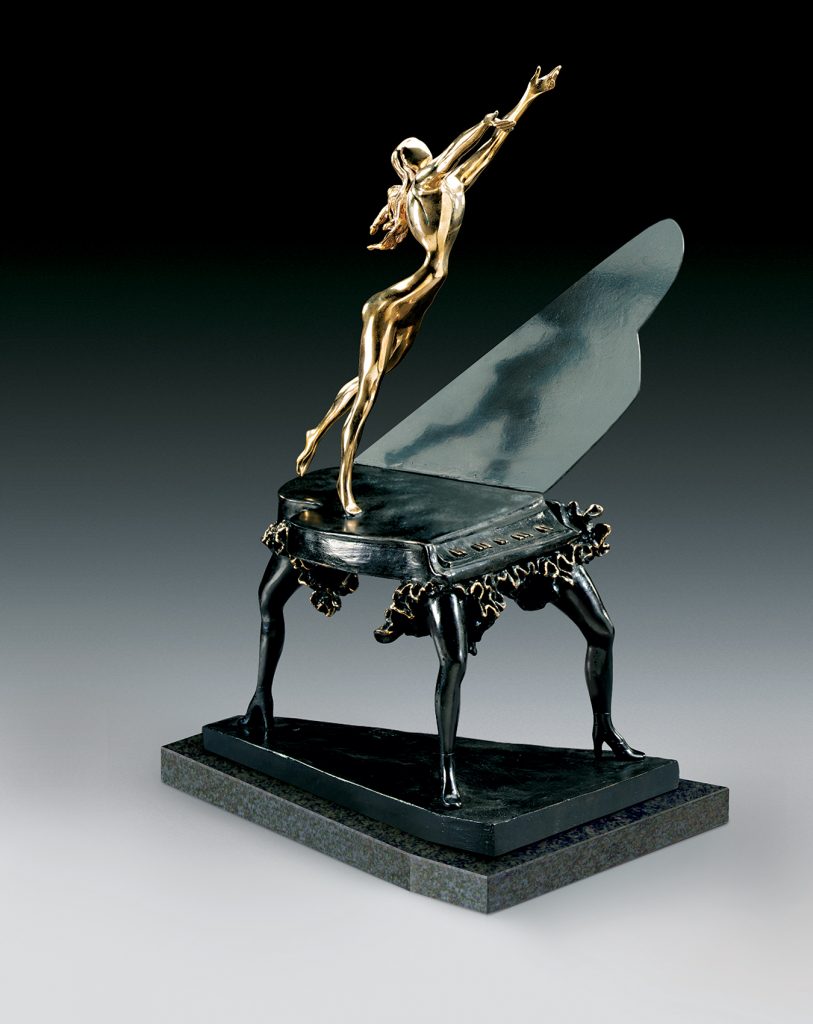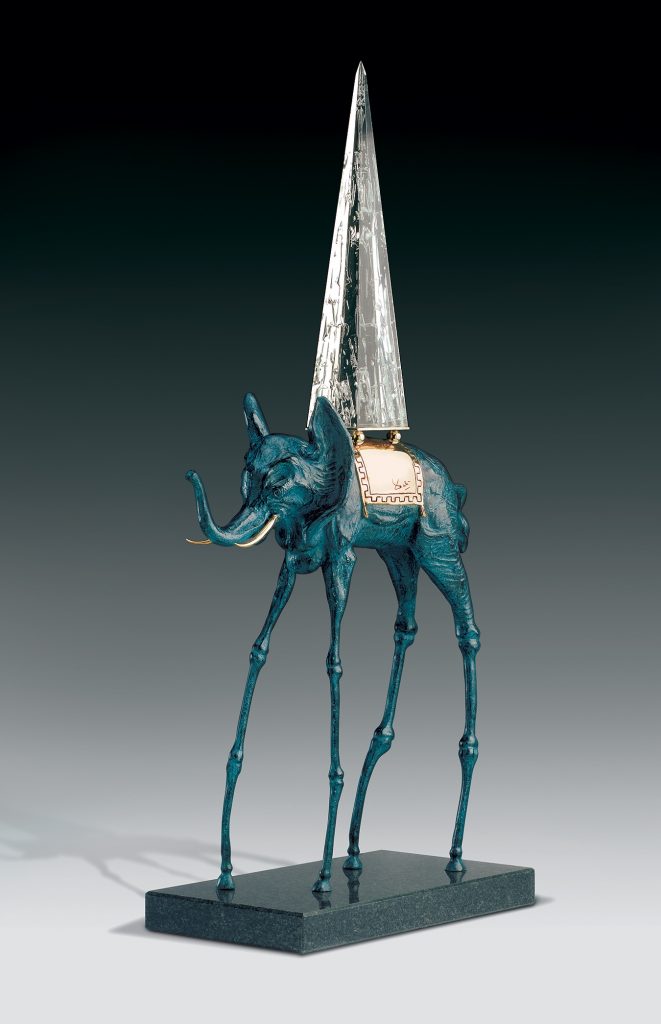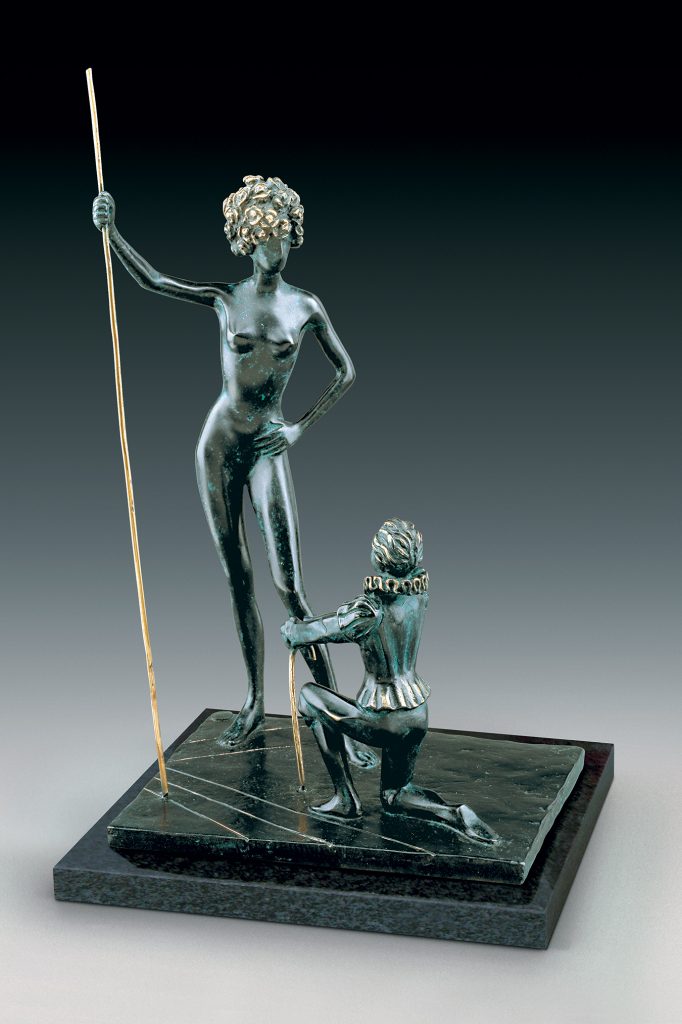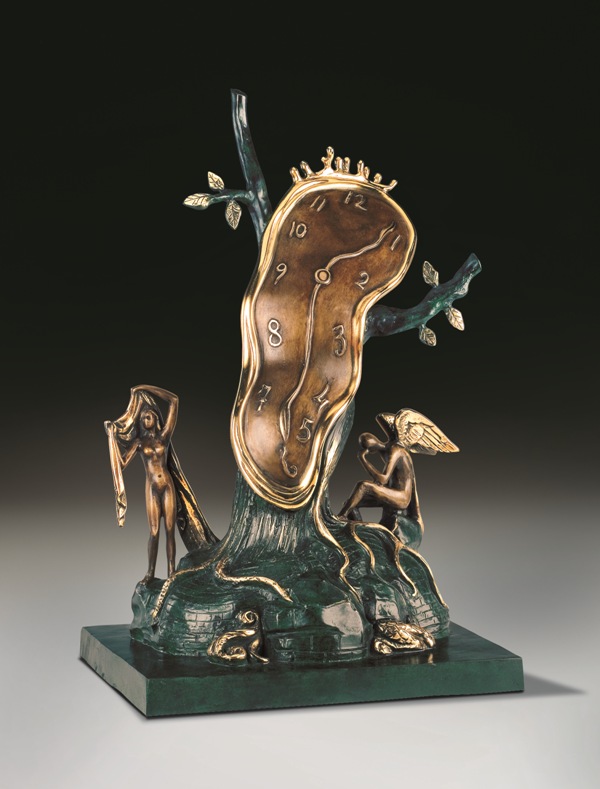To anyone who thinks Salvador Dalí’s sculptures are all akin to the Lobster Telephone of 1938: think again. The new exhibition of his bronze statuary on display at Vancouver’s Chali-Rosso Art Gallery demonstrates the elegance and sophistication his three-dimensional artworks achieved throughout his later career, while still exemplifying all the wonderfully wild idiosyncrasies of a Surrealist imagination. Dalí’s enduring popularity with both the art world and the public established a whole Dalínian iconography of recurring symbols and motifs, situating the artist at the centre of his own creative, self-referential universe. Forever a Surrealist, Dalí’s art epitomised the psychic voyages envisioned by the Surrealists from the commencement of his career to its conclusion. And ever an innovator, Dalí experimented in numerous artistic media as his practice progressed; his classic imagery has been immortalized in his lithographs, etchings, and bronzes, which can be enjoyed at the Chali-Rosso’s new exhibition, “Definitely Dalí”.
The Chali-Rosso Art Gallery, which opened its doors in 2005, is committed to the authenticity of its artworks; the gallery’s owner, Susanna Strem, conscientiously retains all records, certificates, and Catalogue Raissonés confirming the verity of the collection. And the collection is nothing short of impressive. The name “Chali-Rosso” is itself a sort of acronym for Chagall, Dalí, Miró, and Picasso, four of the modern masters that Strem favours collecting most, though her inventory includes several others ranging from Renoir to American painter Robert Motherwell, whose works alternate across the Chali-Rosso’s walls as exhibitions come and go.
As a collector and appraiser of modern art, Strem’s main interests generally involve graphic works; the original Dalí sculptures presently at the gallery were acquired from Beniamino Levi, the president of the Stratton Foundation and the personal conservator of contracts and commissions for many of Dalí’s bronzes. To create his bronze masterpieces, Dalí conceived the idea, the image, and the initial maquette for every statuette, before they were exquisitely crafted in limited editions by Swiss artisans employing the lost wax process.
The sculptures themselves are “Defintiely Dalí”. They pay homage to the most celebrated motifs in Dalí’s artistic oeuvre, everything from his classic crutches to his angels to his enigmatic skipping ropes. They are paired effectively with the lithographs and etchings in the permanent collection so that vivid visual analogies can be seen between the bronzes and the graphic pieces behind them. Anyone familiar with Dalí’s most famous painting, The Persistence of Memory (1931), along with his Soft Watches (1933) and Triangular Hour (1933), will immediately recognize the melting clocks in the sculptures Profile of Time and Nobility of Time. If they do not, Dalí’s lithograph Melting Space-Time (1975) is mounted nearby, paralleling the distorted clocks’ nebulous imagery. Likewise, the spider-legged Space Elephant sculpture will remind Dalí’s devotees of The Temptation of St. Anthony (1946) or his original 1956 sculpture, The Space Elephant, but the sculpture is juxtaposed against Celestial Elephant (1979), another lithograph in which Dalí’s symbol of the long-legged mammoth is expressly evoked. The effect is quite breathtaking. “People think they have to pay, coming in here,” muses Strem with a modest smile. “But I like to share. Art should be all around us.”











